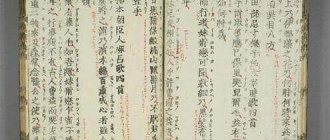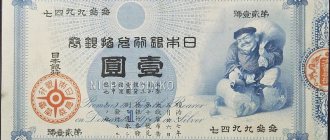Pachinko machines: history of creation and important facts about the game
The name of pachinko slot machines comes from “pachi pachi” - the clicking of small objects in a crackling fire. Pachinko is reminiscent of a pinball game. The player buys metal balls, puts them into the machine and then uses a lever to control the speed at which they are fired onto the playing field. A stream of balls then cascades down through a maze of various obstacles. Most of the balls disappear, but some of them fall into special holes, and the game continues, only with certain changes on the playing field.
The main task of the player is to ensure that the balls he throws reach certain rewards.
Interesting
There are suggestions that the game of pachinko owes its origin to the American game “Coringt”, which arose in the 20s of the last century in Chicago.
By the way, in the USA, pachinko machines are also very popular and in demand.
The game developers cleverly thought out how to make the trajectory of each ball as unpredictable as possible. As a result, players have a desire to try their luck again and again.
According to the latest data from The World, even the coronavirus pandemic could not reduce interest in the game from its loyal fans.
Arcade machines today
The selection of slot machines in modern Japanese arcades is rich: there are not only all the classic games, but also new releases. There is also a different type of slot machines for each category of visitors: for families, sports simulators and other team games with easy controls; for teenagers, more complex games with a competitive element; for regulars over 40, classic slot machines from childhood; and for older people, betting simulators and gambling. In general, all machines can be divided into several categories. Let's go through each of them.
Music or rhythm games
Games in which you need to press buttons to the music, getting into the rhythm, are very popular among the Japanese and are found in different variations on almost all consoles. But playing them in arcades is especially fun: here you can play on a musical instrument emulator or dance to the rhythm yourself.
Typically, such machines imitate playing an instrument or dancing. Symbols appear on the machine’s screen accompanied by music, and the player’s task is to press the appropriate key in time. Many machines have unique control panels that are not always available for purchase at home. In addition, the sound and images in arcades are always of high quality. This is the reason for the undying popularity of slot machines with rhythm games.
Drumming simulator DrumMania
Almost all of the most famous classic rhythm game series belong to Konami: Beatmania, Dance Dance Revolution, GuitarFreaks, DrumMania and others. We can say that today Konami is a leader in the production of music games: the company still continues to release new machines. For example, in February 2021, the dance game Dance Dance Revolution A was released, and in February 2017, Nostalgia, which simulates playing the piano, was released.
Rhythm game developers have always tried to come up with original control panels for their machines, and today this trend continues. Slot machines of unusual shapes are appearing with touch panels, motion control and other new functions.
Sports simulators
Simulated sports games are some of the favorite entertainment for the whole family. The controls on each machine are unique and are usually similar to playing a real sport.
There are exceptions: sometimes sports simulators focus on the strategic component of the game. For example, World Club Champion Football is a simulator for managing a football team. The player moves the athletes' cards around the table, simulating their location on the field, and the machine analyzes the situation and plays football.
World Club Champion Football from Sega
One of the most popular games in Japan among older people is Sega's Star Horse series. It's a cross between a horse racing simulator and a betting simulator.
It is noteworthy that Star Horse is designed for company. Several players gather in a special room in front of a large screen on which horse racing takes place. Each one also has a personal display with a control panel. On it, the player first trains and breaks in his horse, after which it can participate in the races. An important element of the game is betting. If the horse wins the race and the player wins his bet, he can unlock new upgrades for his horses. Since Star Horse is just a simulation of gambling, you cannot bet real money on it.
A new series of slot machines StarHorse3 SeasonⅤ EXCEED THE LIMIT was released in 2021
Retro slot machines from Sega like Sports Jam and Power Smash, released in the West under the name Virtua Tennis, have also remained in arcades. These machines have classic controls: a stick and several buttons. Although these games have long been ported to consoles, there are still many people who want to play them in the arcade.
Dating simulators
Another type of simulator found in Japanese arcades. Although most of the games in the day sim genre have recently been released on consoles, PCs and mobile platforms, some releases have also made their way to arcades.
For example, the game from Konami was released not only on Nintendo 3DS and iOS, but also appeared. Players may be attracted to this version by the ability to process and print photos of girls directly through the arcade machine.
Race
Realistic racing machines with dynamic short gaming sessions have always found their audience in Japan. The controls of the car are not always the same for different automatic machines, but they usually look familiar: steering wheel, gearbox, pedals.
Gameplay Wangan Midnight 5 DX
Racing simulators are still very popular today, and new machines with them appear regularly. For example, in 2018 Japan will be released.
Racing machine Mario Cart Arcade Grand Prix 2
Shooters
With shooters, everything is clear: the player uses a controller in the shape of a firearm and aims it directly at the screen. Depending on the theme of the game, the shape of the controller may be different. The most common, of course, is a pistol, but there are also shotguns, machine guns and futuristic models.
Probably because of such a simple and realistic way of playing, new shooters continue to appear steadily in Japanese arcades: for example, Point Blank was released in 2016, and Shoot Away Pro (both from Namco) was released in 2021.
Fighting games
During the golden era of arcades, fighting games were one of the most popular genres for arcades. And although they have since been ported en masse to home consoles, not all series have completely disappeared from arcades. Some developers maintain the tradition of releasing on the original platform: the arcade release of fighting games always preceded its release on consoles.
The two main competing fighting games hitting arcades are Capcom's Street Fighter and Namco's Tekken. Recently, the approaches of these two companies to promoting their franchises have changed.
Namco is faithful to tradition to the last: every new game in the Tekken series is still first released in arcades and only then ported to consoles. Until recently, Capcom also released almost every new part in arcades: primarily as a tribute to tradition.
JAEPO 2021 visitors play Tekken 7
True, with the release of Street Fighter V, the company changed its strategy and immediately released the game on home consoles, bypassing the arcade release. And it looks like Capcom has no intention of developing a slot machine version. Released by Taito in October 2021 for their exclusive competition. The developers announced in advance that the machines would not make it to entertainment centers in Japan: the arcade version of Street Fighter V was temporarily available only at the Taito event.
But even if the era of arcade fighting games is a thing of the past, they have forever left their mark on the history of Japanese gaming. One need only remember the controllers that many fighting game fans prefer to use.
Photo booths
At first glance, photo booths or "purikura" have nothing to do with gaming, but lately they have become a fixture in arcades. The word “purikura” is derived from the words “print” and “club” and reflects one of the functions of the machine - instant printing of photographs.
Purikura differs from a regular photo booth in that it has additional functions. For example, you can change your facial features in a photo: increase the size of your eyes, reduce your cheekbones, lighten your skin color, or add makeup. And then you can change the background, add stickers and various inscriptions to the photo.
Purikura is considered almost exclusively youth entertainment: people usually come here to take photos in the company of friends and capture a memorable meeting. a photo in such a photo booth costs from 100 to 500 yen (about 50-250 rubles).
Bonus games
It's hard to imagine an arcade without classic bonus games like crane machines or UFO catcher. They are, perhaps, one of the few machines that have been preserved everywhere throughout the world, including in Russia.
The principle of operation is simple: using a pair of levers or buttons, the player controls a small crane. The task is to draw the prize you like from the machine. In addition to classic soft toys, there are other prizes in Japan: stickers, keychains and candies.
Capsule machines are also popular. Small plastic capsules contain toys and figurines of famous pop culture characters. The visitor simply throws change into the machine and hopes for luck: something rare may fall out of the capsule. Such machines are popular among figure collectors: for a small change you can win a very expensive and rare toy.
Each machine contains toys from the same series
How much do the Japanese spend on pachinko every year?
According to the latest data from Business Insider, gambling Japanese spend about $200 billion a year on pachinko slot machines - 30 times more than the annual gambling revenue in Las Vegas. This amount exceeds even New Zealand's GDP.
And this is not surprising, since there are 10.6 thousand parlors with pachinko machines in the country, which invite the Japanese to play their favorite game. However, it should be noted that every year the number of pachinko machines is decreasing - compared to 2005, there are now almost a third less.
Interestingly, despite the long ban on most gambling in Japan, the country's gambling industry accounts for about 50% of all leisure activities, and employs 10 times more than the largest Japanese automakers.
It should be noted that in 2021, the Japanese Parliament passed a bill legalizing gambling. However, casino operators could not begin the application process because the government had not approved regulations governing the activities of gambling companies. At the same time, the authorities said that they do not plan to allow the game of pachinko in casinos, because it is the root cause of gambling addiction in the country. Therefore, parlors with pachinko machines have to work in the “gray”. In Japan, legislation allows the operation of slot machines where money is not a reward. And arcades with pachinko machines have taken advantage of this loophole in the law: players are offered various prizes instead of money. The prize usually means a token, which the player then sells in a store owned by the owner of the pachinko arcade.
Favorable exchange: prizes and cash instead of balls
Pachinko balls
After finishing the game, pachinko parlor customers exchange their remaining balls for item prizes. As a rule, these are cigarettes or sweets, but can be any other option - from ties, handkerchiefs and socks to electrical goods, CDs, DVDs, cosmetics and jewelry. The range of prizes depends on the establishment. In some particularly popular pachinko parlors, the "exchange area" can be compared in size and selection of goods to a small supermarket or convenience store.
However, most pachinko regulars play not for prizes, but for money. The monetization algorithm is as follows: they exchange balls in the “exchange zone” for special prizes, which they then sell at a special point of sale, receiving cash for it. According to Japanese law, players are prohibited from receiving cash prizes directly from pachinko parlors, which is why such an intricate scheme was developed.
With the advent of digital machines, pachinko has become a much more gambling game than before. In one game you can win 20-30 thousand yen, and sometimes 50 or even 100 thousand yen. Quite a lot of people win such large sums. Some eventually even develop gambling addiction (gambling addiction), which in especially severe manifestations represents a certain social problem.
How the game Pachinko can be useful for game developers
The pachinko phenomenon was of interest to researchers Keiji Amano and Geoffrey Rockwell. They analyzed the game and came up with a number of conclusions that game developers can take note of.
In fact, some of them are already doing this. For example, just recently the company Evoplay Entertainment offered players a new development, Pachin-girl, dedicated to the popular Japanese game (this information is not aimed at promoting goods and services on the market and does not constitute advertising in accordance with Part 2 of Article 2 of the Federal Law of March 13, 2006 No. 38-FZ “On Advertising”).
As for life hacks that game developers can learn from the cult Japanese game, these include:
- Audiovisual stimulation.
- Versatile controls that let you find your own rhythm.
- Licensing of famous characters.
- Reusing existing templates to save money.
- Shareware game (regular small payments instead of large ones).
History of the Japanese gaming industry [Part 1]
The Japanese gaming industry in its modern form dates back to the distant 1970s with arcade machines. However, speaking about Japan, it is worth saying that the main manufacturing companies have been in the gaming business for many years, and Nintendo was founded back in 1889. And she was producing hand-colored Hanafuda playing cards. In 1963, Nintendo Playing Card Company Limited
was renamed Nintendo Company, Limited and began producing children's toys. Then she switched to the production of slot machines.
Ultra Hand from Nintendo
SEGA also did not appear on the market out of thin air. Founded by Americans in 1940, it was moved to Japan from Hawaii in 1951, and SE
rvice
GA
mes of Japan was founded in 1952. Rosen Enterprises was involved in the export and import of entertainment products. When the company began supplying coin-operated instant photography booths, its business quickly took off, with the systems proving very popular in Japan. Rosen Enterprises soon began importing coin-operated electromechanical games. Rosen Enterprises and Service Games of Japan merged in 1965 to form Sega Enterprises. Within a year, the new company created the submarine simulator Periscope, which became a hit around the world.
The first slot machine game was released in Japan in July 1973 and was the legendary Pong
from Atari.
Japanese giants such as Taito and Sega released Pong clones, which, very original, were called Elepong
and
Pong Tron
.
Although it would seem that it can be copied there. And Pong itself from Atari, developed by Alan Alcorn, was released in the USA a year earlier, in 1972. But already in 1974, a completely original Speed Race was released and Gun Fight in 1975 from Taito, authored by Tomohiro Nishikado. They were later published in the US by Midway
.
Meanwhile, Nakamura Manufacturing Corporation (Namco), founded in 1955, entered into an agreement with Atari in 1973, becoming its official distributor in Japan. Having first released Pong and then its other games, already in the second half of the 1970s they began to develop their own games, transforming their name into the well-known Namco.
Then the first serious struggle between the companies began, but it was quantitative and not qualitative. All the games were similar to each other and differed mainly in names, and since the development itself took a couple of months, taking into account the production of the slot machine itself, companies could take risks by releasing ten failed games and one successful one which would bring the main profit. Here the solution was advertising and a bright poster with an equally attractive name. All the players on the market did nothing but copy each other’s games, releasing hundreds of monotonous “Pongs” every year, some were even published in the USA. This continued until 1978
“In 1978, Taito released Space Invaders in Japan. It was such a hit project that many grocery stores were ready to throw away their product and use all their shelves for it. As they [the publishers] stated, at least 300,000 copies were sold worldwide, including counterfeit copies.”
— Eddie Adlum, publisher of RePlay magazine
The success was such that it caused a shortage of 100-Yen coins in the country. Despite its success, Taito did not immediately publish it in the United States, because they preferred sports games, racing games, and military-themed games, in short, something familiar and familiar from everyday life. But laser battles in space against aliens were not particularly interesting. But it still came out, and in the same year.
Space Invaders himself
Other developers immediately began releasing clones, already Space Invaders
. For such games, the “shoot'em up” or “shmup” genre was invented in the West. In Japan they were popular on arcade machines, and in the West on consoles. One of the most successful clones was Galaxian (October 1979) from Namco. And the very next year, still the same, Namco released the legendary Pac-Man (May 22, 1980)
In an interview with the Times of London
, Toru Iwatani explained how the idea came to him:
“I was then thinking about what things should be in games to interest women.
I sat in a cafe and listened to what they were talking about: mostly about guys and fashion news. In short, there was nothing to play with. And then they started talking about food - fruit, sweets and pies. And then it dawned on me - food and eating it, this is the thing that will attract a female audience . It was this idea that he implemented together with five other developers. Pac-Men rushes through the maze eating dots, and he is chased by ghosts inspired by the ghost of C-Taro and one of the then popular anime.
Pac-Man creator Toru Iwatani (left)
But progress did not stand still, and in parallel with the growing popularity of arcade machines, the most astute corporations paid more and more attention to home consoles. They were encouraged to do this by the success of the Magnavox Odyssey. Back in 1971, when there was no talk about home consoles, Nintendo, in alliance with the American company Magnavox, developed optoelectronic weapons for Odyssey (1972).
It was then that Nintendo embarked on its development path. The release of games and accessories for them was carried out by such companies as Sega, Taito, Namco and, mentioned above, Nintendo. The first home console in Japan was Epoch's TV Tennis Electrotennis, which released Atari's original Pong in September 1975. In 1977, Nintendo released its most popular console at that time - Color TV Game, and in 1977 the first personal computer Sord M200 and Sharp MZ-80K appeared in 1978.
Due to Nintendo's success in the home console market in 1977, as well as the success of Space Invaders, they decided to try their hand at arcade machines. Having released Computer Othello in June 1978, Block Fever was released in November 1978, which, as was then expected, were clones of Breakout.
And Space Fever, released in 1979, was a clone of Space Invaders. But already in 1979 they already began to develop their own games. For example Monkey Magic (August 1979) and Sheriff (October 1979). And until the release of Donkey Kong in August 1981, created by Shigeru Miyamotu, it was Nintendo's most popular arcade games.
Other successful companies in the Japanese arcade market included Konami, Data East, Irem, SNK, Nichibutsu, Sunsoft, Jaleco, Tecmo and Capcom.
Gumpei Yokoi is a lead engineer at Nintendo and the creator of the Game Boy. He was one of those who directed the company towards game development.
Donkey Kong (1982) was Nintendo's biggest arcade hit (50,000 units sold). But within a year, the arcade industry began to decline. With the release of Donkey Kong Junior in 1982, Nintendo was only able to sell 30,000 units, and only about 5,000 copies of Donkey Kong 3 (1983).
Between 1975 and 1983, before the release of Nintendo's Family Computer (Famicom), at least 125 home consoles were released in Japan. 90% of this was produced by such giants as Toshiba, Sharp, Matsushita/Panasonic. The most successful Nintendo consoles were “Color TV Game 6” and “Color TV Game 15”. The reason for the crisis in Japan and the USA lies precisely in this very number “125”; the market was simply choked by the influx of similar devices. Only the richest and those who caught the industry development trends in time survived. Nintendo was such a company.
Interesting fact
: The first console with replaceable cartridges was the Atari VCS/2600 (1977), but due to the crisis of the gaming industry in the USA (1983), this innovation was forgotten. Which, in turn, was successfully used by Nintendo.
The release of the NES marked a new approach to the industry and new rules of the game. It was then that the world changed forever, and the foundations of what we see in the confrontation between SONY and Microsoft were laid precisely in 1983.
Before the NES, developers were free to develop games for any console; all they had to do was buy the hardware. Nintendo President Hiroshi Yamauchi broke this market model by installing a special 10NES authorization chip in the NES. If the console chip could not detect the chip in the cartridge, then the game would not launch. And he immediately patented it. Developers needed permission from Nintendo to develop each game. Developers were also prohibited from working for other companies. And games on other consoles were allowed to be released no earlier than 2 years after release on the NES.
They were forced to pay licensing fees to Nintendo in order to participate in Nintendo's quality assurance process, buy development kits from Nintendo, and have Nintendo manufacture all of the cartridges and packaging. Nintendo tested and produced all games on its own hardware (either for a portion of its money or for an additional fee), reserved the right to dictate prices, censored material it deemed inappropriate, and decided how many cartridges of a given game it will release, indicated to publishing companies how many games they could release over a certain period of time (five per year).
Under such conditions, Nintendo released a hundred games a year, while other companies could only count on a dozen. They abandoned their old warranty policy, which allowed consoles to be returned within 90 days. When Nintendo captured 90% of the market, fixed prices were set. And even despite the fact that production costs were falling, prices did not even think of falling.
About Famicom (NES, Dandy)
and the games for it are so legendary that you could write a lot about them, but the format doesn’t allow it, so I’ll be brief and note just a few points.
The NES's introduction to the world was so significant that Japanese director Osamu Katayama compared it to the opening of Disneyland in Tokyo
(it opened simultaneously with the launch of the NES). This turned out to be the most important factor influencing the development of culture in Japan and society as a whole.
Such an incredible success of the NES, first in Japan and then throughout the rest of the world, was due to both several original business decisions and pure luck. Firstly, the company relied on the low price of the console itself, albeit at the expense of graphics
. It was already mentioned above about tight control over developers, and thus Nintendo sold primarily games and not the console itself. The first home consoles, such as the Odyssey, came with a basic set of games and did not release new ones, let alone arcade machines tailored for one specific game.
For advertising purposes, Nintendo began publishing magazines dedicated to their own games.
, and so that they would be bought more actively, some games were released almost unplayable without tips, which were published in such magazines. Nintendo was also the first to understand that it was necessary to attract an adult audience, who actually buy consoles for their children. Mass production of sports simulators of football, mahjong, as well as several educational games began.
(Famicom) The NES was marketed primarily as a family console, not just a children's console.
Wanting to build on its success, Nintendo developed an entire infrastructure of production and consumption around the world. For ordinary users, it looked like “Nintendo World”, which organized tournaments, sold merchandise, created interconnected fan clubs from more than 250 establishments, not to mention the sale of the consoles themselves and games for it.
Beep was
(1984-1989), weekly
Family Tsuushin
(1986-1995).
In 1995 it transformed into Famitsu
, which now remains the most popular magazine in Japan.
Also, after the successful release of Super Mario Bros
in 1985 (6.81 million copies were sold in Japan alone), a magazine appeared dedicated exclusively to the exploits of the mustachioed plumber.
In addition to Mario
, only a few series of games received the same popularity, among which were
Dragon Quest
from Enix, a series of baseball games
Family Stadium
from Namco,
Castlevania
from Konami,
Legend of Zelda
from Nintendo itself and Final Fantasy from Square, as well as several games based on then popular manga and anime.
Interestingly, Yamauchi himself was very skeptical about the success of home consoles in the 1970s. He believed that primitive graphics would not be to the taste of the Japanese. He wanted more "realism" from arcade machines.
Then, in 1984, Sega released its first console, the Sega Master System. Which, although it sold well at first, could not compete with Nintendo. By 1987, Nintendo had 93% of the market. That same year, Sega sold a total of 100,000 Master Systems, and Nintendo sold 2,000,000 NES. Nintendo had more money for promotion and exclusive contracts with the largest video game and toy manufacturers.
“While we were dealing with all these retailers, they [Nintendo] already had everything covered. We simply didn't have the resources to fight Nintendo and their huge marketing budgets."
— Bruce Lowry, SEGA President
The release of the NES and the rapid development of technology in the 1980s played a much more important role for the Japanese industry than one might imagine.
Indeed, in the days of arcade machines, most games looked like a shootout of two pixels with a third pixel against the background of a fourth (and it would be good if it was colored). In such conditions, it was difficult to bring your culture and your unique view of the world into games. But, already the 8-bit era made this possible.
It was then that games became a national phenomenon, the Japanese were able to bring a piece of themselves into new projects of both individual companies and small teams, not to mention such giants as Nintendo. By the second half of the 1980s, such a phenomenon as the “Japanese gaming industry” had taken shape. The games of that time formed a cultural mix of specialists coming from all branches of the media. Programmers alone were no longer enough, and manga authors, anime creators and others began to join the industry. There was an unprecedented rapprochement and interaction of media. Many developers, if not fans, were at least familiar with anime and manga. It was these people who became the originators of such genres as “date sim” and “jRPG” and at the same time it was they who created such iconic characters as Mario and Sonic, bringing the industry to the global level, making it recognizable in the global information flow.
Last but not least, this recognition was achieved thanks to the “Mascots”, in our understanding a mascot, such as the Olympic Bear
.
At that time, most companies sought to create their own recognizable “mascot,” and the famous Sonic was developed with an eye on the American market. For Nintendo, this is Mario. Many games in European settings gradually became saturated with Japanese aesthetics. Already in the first parts of Castlevania, traces of anime and manga were clearly visible
, primarily in the special effects and character animation. As for Castlevania, in Japan it was known (and still is) under the name Akumajou Dracula - this was done for the sake of recognition. The further technology advanced, the more the influence of not only anime and manga, but also cinema, was felt.
Actually, the same thing happened with American industry. New technologies provided access to new opportunities. Looking ahead, I’ll say that classic Japanese board games and so on appeared in the new parts of Mario, but more on that next time. Most of these games did not leave Japan, and we only know about the most popular of them. Also talented artists and designers were required for creation. related products for fans.
The already mentioned “Date sims”, visual novels, erotic games, were, in fact, just interactive versions of manga with audio accompaniment, where reading took up most of the time.
The success of the Famicom and its dominance in the mid-1980s shifted the focus of developers from PCs to consoles. While England and the USA remained loyal to the PC. Primarily thanks to enthusiasts and independent developers. Japanese PC games were distributed at various exhibitions such as Comic Market, mailed out, etc. Thus, genres such as dating sims, games for girls and visual novels spread. Some of them have developed a real fan base: Touhou Project (NEC PC-9801, 1995; Windows, 2002) by Team Shanghai Alice or When They Cry (Windows, 2002).
Such a rapid growth in the popularity of the gaming industry and, more importantly, consolidation of success in society would not have been possible without the social group formed in Japan - “Otaku”, nerds and geeks in our opinion. They immediately saw familiar motifs from anime and manga in the new branch of culture, instantly becoming its staunch adherents. Otaku united collectors of figurines, dolls, comics (manga), and then games. At the same time, being different groups in a common subculture, they were constantly in contact, and games in the mid-1980s attracted more and more specialists. Thus, everyone could see familiar names and styles in the developing industry, luring them into their networks. Among the fans of slot machine nerds, their own gurus appeared. In Japanese style they were called “scoreler” from “score” - glasses. They remained anonymous, but everyone knew their three-letter nicknames.
One of the most famous is called Yun Kitamura (QtQ)
He himself talks about it this way: “When a new game was released on the slot machines, a real competition began - who would be the first to earn the maximum points. There was no Internet back then, so they communicated through magazines such as Gamest and Nintendo Fun Club News, or using laptops in the same Game Centers.”
. There was also Maicon Super Soft Magazine, published in 1984 before Gamest began publishing the best results. Amusement Life magazine did the same thing in 1983 and many others.
And in the USA, the first such magazine was published in 1988 under the name Nintendo Power (there was also a section of several pages “NES Achievers” in which the results of the best players were published)
“As the best Game Boy Tetris player, my name has been listed on Nintendo Power several times. I thought they wouldn't print me a few times, so I signed a second time with a fake name... it was my first and last name, just an anagram."
— Stephen Woznick, co-founder of Apple Computers
Having become part of a new, by that time, global industry,
attracting new players worked according to the scheme “games are cool, pass it on to someone else
. And taking into account the fact that games of that time were aimed at teenagers, the spread of gaming culture took place at the school level, greatly simplifying everything.
Interesting fact:
this became a serious problem and schools banned visits to such gaming centers, where schoolchildren spent all their pocket money in a couple of hours.
The companies themselves tried to take advertising into their own hands. Gaming centers with arcade machines and related games opened throughout the country. This was even before the already mentioned “Nintendo Worlds”. It's just that Nintendo was the first to take this idea to the international level. The same machines were installed on every corner in supermarkets, cinemas, etc. And nearby they prudently hung posters with an inscription in the spirit: “Do you want to know more? Proceed to our gaming centers at such and such an address."
This method of advertising attracted both children and teenagers, as well as young parents under 30 years old. Even then, such Game Centers replaced playgrounds for many children. The children played there, got to know each other, and shared their impressions. The adults did the same. As a result, the average age of a Japanese player in the late 1980s hovered at 19.
, and the situation did not change until the late 1990s, when the industry “matured” and the Japanese themselves grew old with a falling birth rate. This was influenced by the severe financial crisis in the 1990s. Now more than 40% of families in Japan are childless.
Throughout the 1980s, Nintendo, having crushed 90% of the market, remained a monopolist in the arena of interactive entertainment. And no one could challenge her. It was then that modern gaming culture was formed around its products. It was with the NES that the exclusive wars and much more began.
When Japan experienced a video game boom in the first half of the 1980s, personal computers also began to shift towards games. Then they became the software that is most associated with computers, for example, NEC's PC-8001 (1979), PC-8801 (1981) and PC-9801 (1982), the Sharp X1 (1982) and X68000 (1987), Fujitsu FM-7 (1982) and FM-Towns (1989), Tomy Pyuta (1982) and Toshiba MSX (HX-10) (1983). And this is a small part of what was on the market. The situation was very similar to the console market of the late 1970s and early 1980s, when a huge number of platforms were released with minimal differences from a wide variety of manufacturers. And the PC itself was attractive for its technology, sharply contrasting with the monopoly 8-Bit Famicon (NES). Damn consoles were already slowing down progress.
The success of the above platforms prompted developers to launch exclusive franchises on them. Games such as Dragon Slayer (PC-8801; Nihon Falcom, 1984), Thexder (PC-8001; Game Arts, 1985), Ys (PC-8801, Nihon Falcom, 1987), Metal Gear (MSX2, Konami, 1987), Snatcher (PC-8801, Konami, 1988), RPG Tsukūru (PC-8801, 1988, RPG Maker) and many others were released on PC for the first time. And the PC-9801 remained popular until the end of the 1990s thanks to hundreds of high-quality games. Until Windows came along, which released various Indian games (doujinsoft) and those that became purely Japanese “dating sims”, as well as RPGs.
Interesting fact:
the screen resolution on Japanese monitors was 640x400. This was a necessary condition for the correct display of Japanese text.
One of the first RPGs was The Dragon and Princess (1982) from Koei for the PC-8001. In it we were supposed to travel around the world and save princesses. In the same year, the same Koei released “Danchizuma no Yuwaku”, which literally translates as “Seducing the Wife in the Apartment” with clear content.
In 1983, Bokosuka Wars was released by Koiji Sumi and released in ASCII for the Sharp X1. In it, we played as a warlord who must lead his armies against a terrible enemy. But at the beginning of the game we didn’t have these same armies, and the goal of the game was to recruit them. But it was not because of its plots that it was awarded popular memory and a whole paragraph here. Bokosuka Wars proved to be a milestone in the development of the entire RPG genre. It successfully combined both RPG and strategy features, offering then-unprecedented “tactical gameplay” in real time. Each soldier was pumped up and received experience after the battle. In 1985, it was ported to the NES, not to mention other PCs.
Another important game released in 1983 was Nobunaga's Ambition. It offered a similar range of entertainment, only with a greater emphasis on global strategy, while also introducing elements of management. Some RPGs developed in a similar direction until 1989.
But there was another bias; in an action RPG. Their most prominent representative was Dragon Slayer (1984) from Nihon Falcom. Actually, this is where Japanese RPGs began. The setting could be anything, from classic fantasy to cyberpunk and post-apocalypse, but the essence did not change. A solitary hero with a higher goal explores the world and upgrades. This genre has taken root well on consoles. The famous The Legend of Zelda was inspired by Dragon Slayer and a little by The Tower of Druaga.
Dragon Slayer II: Xanadu was released in 1985 and quickly became the best-selling PC game in Japan. It already had everything that we love RPGs for - character development (except for characteristics like “strength”, dexterity” there was a morality system), complex quests, a world rich in details, and the gameplay absorbed all the best from other action-RPGs, which included both the use of magic and bladed weapons.
It was definitely a milestone in the genre, influencing Final Fantasy, Dragon Quest and others. And these are just the most famous Dragon Slayer-centric series. It was she who defined the genre until the 1990s. At the same time, the series itself did not stand still, introducing more and more new elements, for example, a party system for 4 people. At the same time, remaining a side-scrolling RPG, being part of such a genre as “Metroidvania”, that is, it was a mixture of Metroid and Castlevania. Both series started in 1986 and both on the NES, combining platformer, action and shooter (the latter is typical only for Metroid).
In 1988, Arsys Software released the action RPG Star Cruiser on the PC-8801. It is unique in that it was the first to move to full 3D with polygonal graphics, while being an FPS and a space simulator rolled into one. There was a plot in a sci-fi setting with a lot of dialogue. It was voted "Game of the Year" by POPCOM and Oh!X magazines in 1988.
It's safe to say that RPGs played a vital role in the development of the industry. Throughout the 1980s, many cult projects were released on both consoles and PCs.
The game production strategy in Japan was not much different from the West. Once a particular mechanic is successful, others begin to copy it. Some successfully, some not so much. As we've already seen, the dominance of monotonous consoles in the 1970s in Japan nearly crashed the market, and did so in the United States. But now everything was already divided, advertising structures and distribution were built. Moreover, the main players perfectly understood the specifics of the market and possible risks. Average projects simply could not sell as many copies as AAA games. They were not provided with such advertising and information support in the media. The “strong middle peasants” could only fight for the last bits of positivity. Actually, there were no differences from the current state of affairs, of course, there were some happy exceptions, but in essence the market was dominated by several series from several companies. This partly explains the longevity of many Japanese franchises, as well as the fact that the same people are playing now as they were 30 years ago. Good old Mario and Final Fantasy are just enough for them.
Now we are already approaching the 1990s. Then Nintendo released the Super Nintendo Entertainment System (SNES), and back in 1988 SEGA first gave a symmetrical answer. And until 2001, the confrontation was very heated. While in Japan consoles ruled the market, in the West the PC was experiencing the peak of its popularity. But that's a completely different story.
PS. Write in the comments what is missing and what is superfluous? What should you pay attention to and what is not very interesting?
industry, games, Japan, history, many books
Write a comment Total comments: 12











